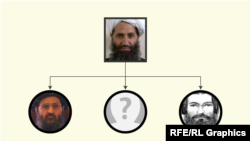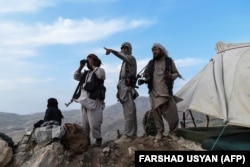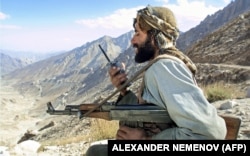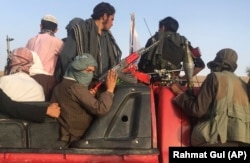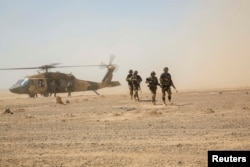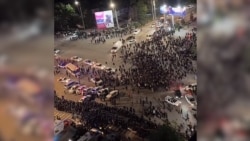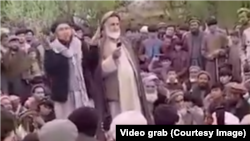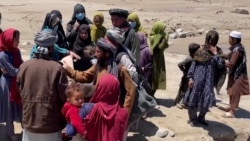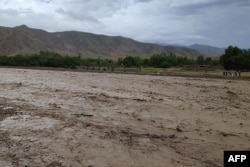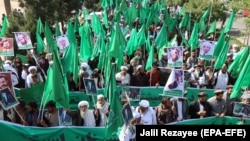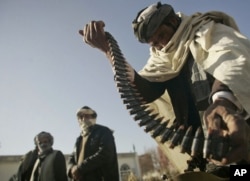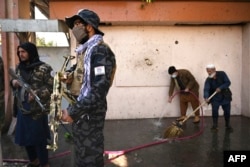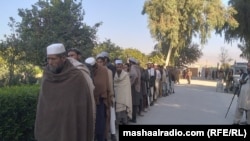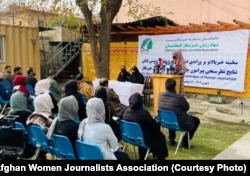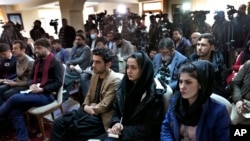Afghanistan
- By RFE/RL's Radio Azadi and
- Ron Synovitz
Who's Who In The Taliban: The Men Who Run The Extremist Group And How They Operate

With the Taliban in control of more than half of all districts in Afghanistan, promises made by Taliban political negotiators in Doha appear to be falling by the wayside.
The movement’s so-called Political Affairs Commission in Doha had vowed in a February 2020 peace deal with the United States that the Taliban would respect human rights and keep foreign fighters out of the territory it controls.
But recent reporting by RFE/RL’s Radio Azadi and Tajik Service belies Taliban claims that it has no foreign fighters in Afghanistan, as there are thousands of them -- mostly Pakistanis -- fighting under the Taliban banner.
Meanwhile, Human Rights Watch said Taliban militants who’ve recently advanced in Ghazni, Kandahar, and other Afghan provinces have been detaining and summarily executing soldiers, police, and civilians with suspected ties to the Afghan government.
Such reports raise doubt about how much clout, if any, the political office in Doha has over battlefield commanders and the shadow governors that Taliban military leaders have installed in the territories they control.
“The most important question about Taliban command and control is the one we know the least about right now,” Afghan security analyst Ted Callahan said. “It centers on the Taliban in Doha right now who are negotiating with the Afghan government and to what degree they actually control the fighting on the ground.”
Command And Control
Questioned by RFE/RL, Taliban spokesman Zabiullah Mujahid described a leadership structure in which the Political Affairs Commission in Doha has no direct control over the fighters who’ve seized vast tracts of territory in recent months.
Mujahid explained in an e-mail to RFE/RL that the Doha political office is just one of nearly two dozen commissions and offices that serve as a kind of cabinet of ministers beneath Taliban Supreme Leader Malawi Hibatullah Akhundzada.
Mujahid said a separate branch in the Taliban’s leadership structure -- the Military Affairs Commission -- oversees the movement’s entire military chain of command down to the provincial and district levels.
He said Akhundzada is the Taliban’s “ultimate authority” on religious, political, and military issues -- adding that Akhundzada has three deputies under his command.
Political Affairs Deputy Mullah Abdul Ghani Baradar heads the Political Affairs Commission and leads the Taliban negotiating team in Doha.
The deputy leader for southern provinces, Mullah Mohammad Yaqoob, is the son of the late Taliban founder Mullah Mohammad Omar. He also heads the Taliban’s military operations.
Akundzada’s deputy for eastern provinces, Sirajuddin Haqqani, also is the head of the so-called Haqqani network.
Mujahid noted that the Taliban’s military chain of command falls under the Military Affairs Commission, which is dominated by Yaqoob and Haqqani.
Going up the chain of command from the district level, each Taliban battlefield commander answers to a provincial command.
Mujahid told RFE/RL there are seven regional “circles” that are each responsible for at least three provincial commands.
Finally, overseeing those regional “circles” are two deputy leaders of the Military Affairs Commission. One is in charge of 21 provinces in the Taliban’s so-called “western zone,” Mujahid said. The other oversees the command in 13 provinces in the “eastern zone.”
The Taliban’s Military Affairs Commission also is responsible for appointing and overseeing all of the provincial and district “governors” in the Taliban’s shadow government.
Necessary Evolution
Analysts say the Taliban’s current leadership structure has evolved out of necessity since 2001 from a loose-knit organization of local militia commanders into a more organized political and military movement.
The key leadership changes came in a response to a dispute that divided the Taliban into rival factions following the death of Taliban founder Mullah Omar in 2013.
In fact, those divisions are an extension of a long-running power struggle based on Pashtun tribal structures.
One side backed Omar’s son as the Taliban’s next supreme leader. It has followers in western and southern Afghanistan. It also dominated the Taliban’s highest advisory and decision-making leadership council -- the Rahbari Shura -- which is better known as the Quetta Shura.
On the other side are Taliban commanders in eastern Afghanistan and Pakistan linked to the Haqqani network. It has strong links to consultative leadership councils known as the Peshawar Shura in northwestern Pakistan and the Miran Shah Shura in Pakistan’s North Waziristan tribal region.
A 2019 study by the U.S. Institute for Peace (USIP) described how the Taliban refined its command structure after the death of Mullah Omar to smooth over the factional divisions.
It said that by creating a more unified military and political movement, the Taliban has been “able to capture and govern large stretches of territory.”
To do so, it created the system of shadow Taliban governance -- a move that allowed military commanders from different factions to appoint shadow government “officials” in territory under their control.
Still, Taliban shadow governance has been “uneven and ad hoc,” the USIP study concluded. It produced different rules “shaped by individual commanders’ preferences, local traditions, and the Taliban’s strength in the community.”
“Multiple actors -- from the Taliban leadership to local commanders -- have played a key role in creating and shaping the movement’s policy in Afghanistan,” it said. “Taliban policymaking has been top-down as much as it has been bottom-up, with the leadership shaping the rules as much as fighters and commanders on the ground.”
Callahan said a key question impacting Afghanistan’s future is whether, going forward, the Taliban will be able to maintain its current command-and-control structure.
“Will it strengthen or will it decentralize so that we see Taliban fiefdoms which are much more regionally aligned than they are nationally?” asked Callahan.
Today's Taliban
“If you had to put a very simple label on it, the Taliban are now basically disgruntled Afghans,” Callahan told RFE/RL. There also are thousands of non-Afghan Taliban fighters in the country, he added.
“It’s no longer a Pashtun ethno-nationalist movement,” Callahan explained. “It’s much more diverse than it was in the 1990s.”
Bill Roggio, a senior fellow at the U.S.-based Foundation for Defense of Democracies (FDD), doesn’t believe the Taliban’s promises in the 2020 Doha agreement to respect human rights and keep foreign fighters out of the territory it controls.
Roggio, a senior editor of the FDD’s Long War Journal, said today’s Taliban still appears to be trying to establish an Islamic Emirate of Afghanistan and impose their strict version of Islamic law on the Afghan people.
But Roggio also sees important differences between today’s Taliban and the Islamist regime that controlled most of Afghanistan during the late 1990s.
“The Taliban is largely made up of Afghans,” Roggio told RFE/RL. “It’s dominated by Afghans. But this question is a little tricky because of groups like the Haqqani network that are based in both Pakistan and Afghanistan.”
“There are a large number of ethnic Uzbeks and Tajiks, even Turkmen and, in some cases, even ethnic Hazara who are Afghans and are part of the Taliban today,” Roggio said. “The Taliban has made deep inroads into these communities in recent years. That’s a big different between the Taliban today and the Taliban before the September 11, 2001, terrorist attacks against the United States.”
The thousands of foreign militants fighting for the Taliban in Afghanistan include fighters from the Middle East who are part of Al-Qaeda as well as militants from Pakistan and Central Asia, he said.
Indeed, a recent report by the UN Security Council’s Analytical Support and Sanctions Monitoring Team said that out of an estimated 85,000 active Taliban fighters in Afghanistan, about 10,000 are thought to be foreign militants.
It says about 6,500 of them are Pakistani citizens. It says others come from Central Asia, Chechnya, or the remnants of Al-Qaeda in the Middle East.
“The primary component of the Taliban in dealing with [Al-Qaeda] is the Haqqani network,” the UN monitoring team concluded. “Ties between the two groups remain close, based on ideological alignment, relationships forged through common struggle, and intermarriage.”
In northern Afghanistan, an exclusive report by RFE/RL’s Tajik Service documented how the Taliban has put the commander of militants from Tajikistan in charge of five districts recently seized by the Taliban along the border with Tajikistan.
The 25-year-old commander, who goes by the alias Mahdi Arsalon, was born in the village of Sherbegiyon in Tajikistan’s eastern Rasht Valley.
Arsalon and his militants are known in Afghanistan as the “Tajik Taliban.”
In reality, they are members of Jamaat Ansarullah, a group founded a decade ago by a rogue former Tajik opposition commander with the goal of overthrowing the government in Dushanbe.
Jamaat Ansarullah is banned in Tajikistan as a terrorist group.
RFE/RL correspondents in northwestern Afghanistan recently reported the presence of Uzbek militants affiliated with the banned Islamic Movement of Uzbekistan (IMU).
Badghis Province Governor Hossamuddin Shams told RFE/RL the Uzbek militants have been managing the Taliban war in parts of the north and west of the country.
Shams said the families of about 80 Uzbek militants arrived in Badghis Province from Pakistan in 2018 and are now stationed in the Bala Murghab district.
He said most of these Uzbek Taliban fighters are the children of IMU militants who fled to Pakistan in late 2001 after they helped the Taliban fight against the anti-Taliban Northern Alliance the previous year in Takhar Province.
Afghanistan’s northern neighbors say they are concerned that Central Asian Taliban fighters will eventually try to return to their homelands to launch insurgencies.
Callahan, a former adviser to U.S. Special Forces in northern Afghanistan, said the Taliban’s claim that it does not have foreign fighters in its ranks is “demonstrably untrue.”
“It does seem that they are using these fighters simply because they lack the manpower at the moment to administer all of the areas that they’ve taken over,” Callahan told RFE/RL. “That seems to be a consensus point right now.”
“In the Taliban blitzkrieg across the north in recent months, there are reports of foreign fighters actually being involved in the fighting because, in many cases, the Afghan and Pakistani fighters were insufficient in numbers,” he explained.
Callahan notes that reports of ethnic Uyghur militants from western China being used by the Taliban in the northeastern Afghan province of Badakhshan have unsettled Beijing.
He said the Taliban will continue to deny the presence of foreign fighters among its ranks.
“There is a potential future role in Afghanistan of China,” he said. “Beijing seems to be hedging its bets on whether the Afghan government or the Taliban will have power in the future. They seem poised to work with either group.”
“Having foreign fighters who work with the Taliban -- particularly Uyghur militants -- does threaten the Taliban-Chinese relationship in the future,” he concluded.
Taliban Vs. Afghan Security Forces
On paper, the Taliban is heavily outnumbered and technologically inferior to Afghanistan’s National Security Forces.
But analysts warn that, as with many things about Afghanistan, what appears on paper is not as it is on the ground.
Including troops under the command of the Defense Ministry and police in the Interior Ministry, there are at least three times as many Afghan security forces than the estimated number of active Taliban fighters in the country.
The U.S. Special Inspector General for Afghan Reconstruction (SIGAR) said in its latest report to Congress that the total strength of Afghan National Security Forces -- including the army, special forces, the air force, police, and intelligence officers -- is about 307,000 personnel.
Jonathan Schroden, a security expert at the CNA research organization in Arlington, Virginia, estimates that the Afghan government has about 180,000 available combat troops on any given day.
Afghanistan also has been well supplied by the United States, which has spent some $83 billion to help build, equip, train, and sustain the Afghan security forces since the previous Taliban regime was toppled in late 2001.
Afghanistan’s military has received armored vehicles, planes, and attack helicopters, artillery, assault rifles, night-vision goggles, and surveillance drones from the United States.
SIGAR said the Afghan military also has a fleet of 167 aircraft, including its attack helicopters.
But the weaponry delivered to Kabul over the past two decades and what is now available for combat are two different things.
Complete details about the current status of the Afghan arsenal are classified.
But anecdotal evidence suggests much of what has been delivered to the Afghan government and pro-government militias over the years is either no longer functioning or has fallen into the hands of the advancing Taliban.
Roggio and Callahan agree that the main source of Taliban weaponry appears be within Afghanistan itself.
They say that includes recently captured Western-made weapons and equipment that was supplied to the Afghan military such as assault rifles, vehicles, and night-vision goggles.
It also includes the small arms and light weapons that flooded the country since the Afghan-Soviet War in the 1980s, such as Soviet-designed AK-47 assault rifles, rocket-propelled grenade launchers, and mortars.
Taliban expert Antonio Giustozzi said the Taliban have tried to use some antiaircraft and antitank weapons with mixed success.
Small rockets, suicide bombers, and improvised explosive devices (IEDs) are among the deadliest weapons used by the Taliban.
Experts say the regional black market also is a rich source for Taliban weaponry.
Chemicals for fertilizer brought from Pakistan are known to have been widely used by the Taliban to make IEDs in southern and eastern Afghanistan.
But officials in Pakistan, Iran, and Russia deny accusations by Kabul and the U.S. military that they have covertly supplied Afghanistan’s Taliban with weapons and other support.
Written and reported by Ron Synovitz in Prague with reporting by RFE/RL Radio Azadi correspondents in Afghanistan whose names are being withheld for security reasons. Additional reporting by RFE/RL’s Tajik Service.
More News
'We Are Scared': Afghan Community, Foreign Students Warned To Stay Off Bishkek Streets
An Afghan refugee in Bishkek says he fears for his safety after violent mobs attacked foreigners in the Kyrgyz capital. The assault was allegedly directed at international students and migrants. Victims have said Pakistani and Indian students were targeted.
- By Reuters
50 Dead In Heavy Rain, Floods In Central Afghanistan

At least 50 people are dead following a fresh bout of heavy rain and flooding in central Afghanistan, an official said on May 18. Mawlawi Abdul Hai Zaeem, head of the information department for the central Ghor Province, told Reuters there was no information about how many people were injured in the rain spell that began a day earlier, which had also cut off many key roads to the area. Zaeem added that 2,000 houses were completely destroyed, 4,000 partially damaged, and more than 2,000 shops were under water in the province's capital, Feroz-Koh.
At Least 4 Killed In Attack On Foreign Tourists In Afghanistan
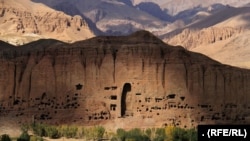
At least four people were killed in an armed attack on a group of foreign tourists at a market in Bamiyan Province in central Afghanistan on May 17, according to government and security sources.
Taliban-led Interior Ministry spokesman Abdul Matin Qane was quoted by AFP as saying that 11 people were shot and that four of them, including three foreigners, died. Among the other seven victims were four foreigners and three Afghans, he added.
But a Taliban security source told RFE/RL's Radio Azadi that the attack left eight people dead.
The source, who asked not to be named, told RFE/RL that five Afghan civilians and three foreigners were shot dead. The governor of Bamiyan did not respond to RFE/RL’s requests for additional information about the shooting.
Qane said the foreigners were tourists but did not provide their nationalities.
Hospital sources quoted by AFP said preliminary information indicated that three Spanish nationals were killed, and that the wounded were from Norway, Australia, Lithuania, and Spain.
A spokesman for the Spanish Foreign Ministry confirmed to Reuters that Spanish nationals were among the victims in the attack. The spokesman said the total number of victims had yet to be confirmed.
Security forces have arrested four people in connection with the attack, Qane said.
The Taliban government "strongly condemns this crime, expresses its deep feelings to the families of the victims, and assures that all the criminals will be found and punished," Qane said in a statement.
Afghanistan has been attracting more and more tourists since improvements in security following the Taliban's return to power in Afghanistan in 2021 after the withdrawal of international forces.
The Bamiyan region is home to many members of the mainly Shi'ite Hazara ethnic minority. The historically persecuted religious minority has been repeatedly targeted by the Islamic State extremist group, which considers them heretics.
In 2001, the Taliban blew up the giant, centuries-old Buddha statues that were carved into cliffs at Bamiyan. The statues once stood alongside caves, monasteries, and shrines that are among the tourist attractions in the province.
Before blowing up the statues, the hard-line Islamist group declared them "false idols.” Their destruction has been called the "cultural crime of the century.”
With reporting by AFP
Intense Border Clashes Between Taliban, Pakistan Cause Deaths, Destruction
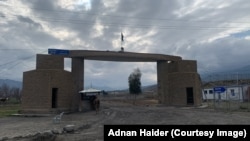
At least one Taliban border guard and one Pakistani soldier have been killed and several more injured in the latest border clashes between them.
The clashes continued into the early hours of May 17 after they first erupted five days ago. Pakistani and Taliban forces targeted each other in several places along the eastern Afghan provinces of Paktia and Khost, which borders Pakistan's western Kurram district.
Most of the casualties occurred on May 15 when one Pakistani soldier was killed and six more injured after a Taliban rocket hit their post, according to official sources in the country. The Taliban also acknowledged the death of one of its fighters.
"Intense shooting is spreading a wave of fear among locals,” Imran Ali, a Pashtun tribal leader in Kurram, told RFE/RL’s Radio Mashaal on May 17.
Sameer Khan, a resident of the Teri Mangal area straddling the border, said that locals are moving to safer regions after mortar shells landed in civilian homes.
Shabbir Ahmad Usmani, a Taliban official in eastern Afghanistan, said they are collecting information on the human and material losses in the fighting.
The clashes erupted on May 13 after Pakistani forces began repairing the barbed-wire fence it first erected in 2017 to demarcate the Durand Line border, which no government in Afghanistan has formally recognized after it was first drawn by the British Empire in India in 1893.
Relations between Afghanistan's Islamist rulers and Pakistan have been tense since the Taliban returned to power in 2021. Islamabad blames the Taliban for sheltering the Tehrik-e Taliban Pakistan (TPP), a longtime ideological and organizational ally of the Taliban.
The recent tensions were partly flamed by an alleged Pakistani air strike in the southeastern Paktika Province, reportedly targeted by the Pakistani Taliban.
On May 12, at least seven Pakistani soldiers were killed and two more injured in two separate militant attacks in Pakistan’s North Waziristan district, which borders Paktika.
Ihsanullah Tipu Mehsud, director of news at the Khorasan Diary, a website tracking militant groups in Afghanistan and Pakistan, says the Taliban blames Islamabad's border fence for the tensions. At the same time, Pakistani authorities allege that the TTP is exploiting the border to infiltrate Pakistan with the help of the Taliban.
“Unlike previous Afghan regimes led by Karzai and Ghani, which largely relied on verbal criticisms over border issues, the Taliban has resorted to force,” he said, referring to former Afghan presidents Hamid Karzai and Ashraf Ghani.
He said that the clashes have severely disrupted trade between the two countries, wreaking havoc among the Pashtun border communities in the two countries.
“Border tensions not only disrupt trade but also undermine trust,” he said. “This underscores the pressing need for a peaceful resolution to this long-standing dispute.”
But both the Taliban and Islamabad have been silent over the clashes, which experts say might indicate a complete breakdown in their relations.
The Azadi Briefing: New Leaks Reveal The Luxury Dubai Properties Of Ex-Afghan Officials

Welcome to The Azadi Briefing, an RFE/RL newsletter that unpacks the key issues in Afghanistan. To subscribe, click here.
I'm Abubakar Siddique, senior correspondent at RFE/RL's Radio Azadi. Here's what I've been tracking and what I'm keeping an eye on in the days ahead.
The Key Issue
Leaked data has revealed that some officials of the former Western-backed Afghan government own luxury properties in Dubai.
The Dubai Unlocked project, a joint investigation by more than 70 media outlets, named 10 ex-officials or their relatives as holders of multimillion-dollar apartments, houses, or villas in Dubai.
They include former parliament speaker Mir Rahman Rahmani and his son, Ajmal Rahmani. The pair own more than $15 million in real estate in Dubai, according to the documents.
Others named in the leaks include ex-intelligence chief Asadullah Khalid, who owns a villa worth around $5.4 million, and the brother and son of Mohammad Qasim Fahim, the late former defense minister and vice president, who own luxury properties worth more than $4.6 million.
Former ministers Amirzai Sangin, Atiqullah Baryalai, Ratib Popal, a cousin of ex-President Hamid Karzai, and former Ambassador Ahmad Wali Masud also own expensive Dubai properties, according to the leaks.
Why It's Important: After the U.S.-led invasion in 2001 that toppled the first Taliban regime, Washington allocated billions of dollars for the reconstruction of Afghanistan.
Many ex-Afghan officials and U.S. contractors, some of them members of the new Afghan political elite, were accused of skimming some of those funds.
The Dubai Unlocked project has revealed that at least some of them purchased luxury properties in the United Arab Emirates.
The leaks have put the spotlight on the widespread corruption that was endemic under former Afghan administrations.
“Corruption was one of the factors that led to the collapse of the republic,” Khan Zaman Amarkhel, an Afghan anti-corruption expert, told RFE/RL’s Radio Azadi.
What's Next: It is unclear if all the former U.S. contractors and Afghan officials named in the leaks and accused of corruption will be held accountable.
In December, the U.S. Treasury Department sanctioned the Rahmanis for "misappropriation of millions of dollars.”
In January, the Rahmanis filed a lawsuit in Washington, D.C. But in April, a court rejected their efforts to lift the Treasury sanctions until the case was settled.
The lawsuit revealed that the Rahmanis continue to hold Cypriot passports and own more than $212 million worth of real estate in Germany.
What To Keep An Eye On
The emergency situation in areas of Afghanistan hit by flash floods that have killed hundreds of people remains dire, according to rescuers and aid organizations.
Relief efforts have been hampered by the floods, which have made many roads inaccessible to trucks transporting food, medicine, and tents.
Twenty-five of the country’s 34 provinces have been affected by the recent floods, which were triggered by heavy rains on May 10. The northern province of Baghlan, where more than 300 people have died, remains the worst-affected region.
Some of the flood victims in Baghlan said they have received little help.
They include the family of Mohammad Alam, a resident of Baghlan. “The flood didn’t last long, but it came over me like a mountain,” he told Radio Azadi. “It took my son and wife. We have lost a total of six people.”
Why It's Important: Thousands of people continue to be displaced and urgently need food, shelter, and medicine.
International groups and Taliban officials have warned that the death toll could rise significantly. Hundreds of people are missing and feared dead.
The flash floods have exacerbated the devastating humanitarian crisis in the country, making thousands of people homeless and robbing many in agricultural areas of their livelihoods.
That's all from me for now.
Don't forget to send me any questions, comments, or tips that you have. You can always reach us at azadi.english@rferl.org
Until next time,
Abubakar Siddique
If you enjoyed this briefing and don't want to miss the next edition, subscribe here. It will be sent to your inbox every Friday.
Taliban's Drug Ban, Heavy-Handed Tactics Fuel Deadly Protests In Northern Afghanistan
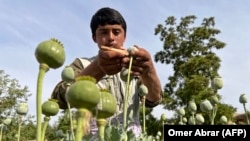
Afghanistan’s northern province of Badakhshan has been the scene of violent protests against the Taliban in recent weeks.
The rare demonstrations have been fueled by the militant group’s forceful enforcement of its ban on illicit drugs, a lifeline for tens of thousands of impoverished farmers.
The Taliban has violently clamped down on the rallies, shooting and killing several protesters and rounding up dozens of locals.
The anti-Taliban rallies, observers say, reveal the anger at the hard-line Islamist group’s unpopular policies and its use of heavy-handed tactics to crush dissent.
“This is an alarm bell for the ruling Taliban,” said Nazifa Haqpal, a British-based Afghan researcher. “The Taliban’s despotic governance based on brute force is not working."
Nearly three years after the Taliban seized power, the group has shown little interest in “understanding [Afghans’] issues or adopting appropriate policies” to address them, said Haqpal.
'Anger And Protests'
Protests broke out on May 3-4 in Badakhshan’s Darayim and Argo districts after Taliban forces tasked with clearing poppy crops clashed with farmers. Locals said the Taliban opened fire and killed two people.
The Taliban sent a delegation to negotiate with the farmers and later said calm had been restored.
But on May 13, protests again erupted in the Argo district. The Taliban responded with brute force, killing two people and wounding more than a dozen others, locals said.
“People did not want their crops to be destroyed,” Shamsuddin Mubarez, a resident of the Argo district, told RFE/RL’s Radio Azadi.
When locals protested, Mubarez said, the Taliban responded by using force. That created “more troubles,” he said.
Kalimullah Humsukhan, a resident of the Darayim district, told Radio Azadi that the Taliban’s forced eradication of poppy fields triggered “anger and protests” in the district earlier in May. He said locals resented the militants’ violent tactics.
'Little Or Nothing'
Since regaining power in 2021, the Taliban has imposed severe restrictions on women, waged a brutal crackdown on dissent, and monopolized power.
The group’s extremist policies have angered Afghans and made its unrecognized government an international pariah.
The Taliban’s 2022 drug ban has significantly reduced the production of opium. But the group has failed to provide farmers with alternative livelihoods and crops, pushing many deeper into poverty amid a devastating economic and humanitarian crisis.
Graeme Smith, a senior Afghanistan analyst at the International Crisis Group, said the Taliban’s ban on narcotics has hit farmers in mountainous areas such as Badakhshan particularly hard, because they have smaller and less productive farms.
“Farmers do not have large stockpiles and little or nothing in reserve to sell,” he said.
Smith said “the only answer [for farmers] now will be nonfarm employment” because alternative crops cannot replace opium, whose price has skyrocketed in recent years.
'Afghan Spring'
The deadly protests in Badakhshan are not isolated.
On May 9, the Taliban killed at least four people after a rally in the eastern province of Nangarhar, which borders Pakistan.
The militants ordered locals to vacate their homes to make way for the construction of a customs clearing facility. Locals resisted the demolition and blocked a major highway. The Taliban responded by firing on the crowd.
Smith said it was not a coincidence that there has been unrest in Nangarhar and Badakhshan, which contributed significantly to the ranks of the armed forces of the former Western-backed Afghan government.
“Now the survivors from those defeated forces are suffering high levels of unemployment,” he said.
Badakhshan is also a predominately ethnic Tajik region and was once a bastion of resistance to the Taliban in the 1990s. The Taliban is mostly made up of Pashtuns.
Haqpal said the protests are evidence of the “political and legal consciousness” that was formed in Afghanistan after the U.S.-led invasion in 2001 toppled the Taliban’s first regime.
The Taliban could face an “Afghan Spring” if such “protests get organized and spread,” she said.
- By RFE/RL's Radio Azadi and
- Will Tizard
'It Took All My Family': Afghan Survivors Recount Fierce Flash Flood
Victims of flash floods in northern Afghanistan say they have lost family and homes since heavy rains first struck the region on May 10. Thousands have been made homeless and hundreds are dead with just as many still missing, according to authorities. Many survivors are still awaiting tents, food aid, and medical care.
'There's Nothing Left': Victims Of Devastating Afghan Floods Struggling For Survival
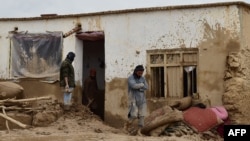
Sabzinah survived the devastating flash floods that have ripped through northern Afghanistan and left hundreds dead and missing.
But the mother of three is now struggling to keep her family alive as international aid groups battle to deliver medicines, blankets, and food to affected communities, most of them in Baghlan Province.
"We don't have anything," Sabzinah, whose home in Baghlan's Barka district was washed away in the floods, told RFE/RL's Radio Azadi. "We're hungry and thirsty."
"We haven't received a tent yet," she added. "My leg was injured, but the doctor could only give me a tablet for the pain."
Sabzinah is among the tens of thousands of people affected by the flash floods triggered by heavy rains on May 10. Deadly floods have also been reported in the provinces of Badakhshan, Takhar, Ghor, and Faryab in recent days.
At least 315 people have been killed in Baghlan alone, according to the United Nations, which added that around 1,600 people were injured and hundreds more were still missing as of May 12. Nearly 3,000 homes were washed away, the world body said.
Rescuers and aid organizations are in a fight against time to reach affected communities.
The World Health Organization said on May 12 that it had delivered 7 tons of medicines and emergency kits to stricken areas. But relief efforts have been hampered by the floods, which have made most of Baghlan inaccessible to trucks.
Some flood victims say they have received little help.
"Some people were able to pull themselves from the floods," Khoda Dad, a resident of Barka district, told Radio Azadi. "But now, everyone is homeless. We need food and also blankets to survive the nights."
Shamsullah, a volunteer in Baghlan's Nahrin district who only goes by one name, said the flash floods were unprecedented.
"There's nothing left after these floods," he told Radio Azadi. "If you look around, you will think that no one lived here."
As rescuers and locals search for the hundreds of people missing, aid organizations have warned that the death toll from the floods in Baghlan could rise sharply.
The floods have worsened the devastating humanitarian crisis in Afghanistan, already the world’s largest, where millions of people are on the verge of starvation.
In March and April, heavy rains and floods killed over 100 people and injured scores in central and eastern Afghanistan.
Hayatullah Rasooli, head of the World Food Program office in northeastern Afghanistan, said on May 13 that the floods in Baghlan had ravaged a region where most people "already faced emergency levels of hunger" and deprived them of their main livelihoods -- agriculture.
"The damage is enormous," said Din Mohammad, a farmer in Baghlan's Dana-e Ghoari district, adding that the floods had destroyed vegetable crops on more than 1,000 acres of farmland.
Written by Abubakar Siddique based on reporting by Faiza Ibrahimi of RFE/RL's Radio Azadi
- By RFE/RL's Radio Azadi and
- Will Tizard
Deadly Flash Floods Hit Northern Afghanistan
Emergency crews continue scrambling to rescue victims of massive flash floods in remote areas of northern Afghanistan, where hundreds have died. Torrents caused by heavy rainfall have struck communities in Baghlan Province, the worst-hit area, and thousands of homes have been destroyed in Badakhshan, Takhar, Ghor, Faryab, and other provinces.
- By RFE/RL's Radio Azadi,
- AP and
- EPA-EFE
Search For Survivors Continues Following Deadly Flash Flooding In Northern Afghanistan
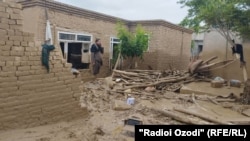
An Afghan man looks at the damage to his home on May 12 following flash flooding that has inundated northern Afghanistan's Baghlan Province,
The latest wave of flooding from heavy seasonal rains has left more than 300 people dead, many more injured, and more than 1,000 homes destroyed, according to UN World Food Program (WFP) officials.
Rescue crews are searching for victims in hard-to-reach areas of northern Afghanistan, where at least 300 people have died in flash flooding caused by heavy rainfall.
Search For Victims Under Way As Death Toll Hits 315 In Afghan Flooding

Emergency crews battled the elements as they searched for victims in hard-to-reach areas of northern Afghanistan, where at least 315 people have died in flash flooding caused by heavy rainfall. The Taliban, Afghanistan’s de facto rulers, on May 12 said at least 1,630 people were injured in Baghlan Province, the worst-hit area, and more than 2,660 homes destroyed. Badakhshan, Takhar, Ghor, Faryab, and other provinces have also been hit by the flooding. UN Secretary-General Antonio Guterres said in a statement that the UN and “its partners in Afghanistan are coordinating with the de facto authorities to swiftly assess needs and provide emergency assistance.” To read the original story by RFE/RL’s Radio Azadi, click here.
Aid Workers Say Death Toll Over 300 From Flooding In Northern Afghanistan

The latest wave of flooding in northern Afghanistan from heavy seasonal rains has left more than 300 people dead and many more injured and more than 1,000 homes destroyed, according to UN World Food Program (WFP) officials.
The WFP figure is twice the death toll reported hours earlier on May 11 by a spokesman for the Taliban-led government's Interior Ministry.
Ministry spokesman Abdul Mateen Qaniee told Reuters that at least 135 people were injured.
Baghlan Province was initially said to be among the hardest-hit areas, but officials added Badakhshan, Ghor, and Herat provinces to that list.
Taliban government spokesman Zabihullah Mujahid expressed "profound sorrow" and cited a "grievous toll" in those four regions.
He also cited "extensive devastation” and “significant financial losses.”
The Taliban Defense Ministry said on May 11 that air forces were evacuating stranded residents in Baghlan and had transported some to military hospitals.
The Taliban-led government is recognized only by China, although a number of countries work with those authorities in many cases to help alleviate the humanitarian hardships that have continued since the Taliban captured most of the country in mid-2021 as U.S.-led international troops withdrew and the UN-backed government fled.
With reporting by Reuters
Afghan Policemen Killed In Blast During Mission To Eradicate Poppy Crops
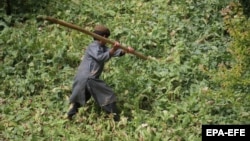
Three policemen were killed and five others injured when a bomb exploded near a police convoy on a mission to destroy illegal poppy crops in Afghanistan’s northeastern Badakhshan region, the country’s Taliban rulers said on May 8. Spokesman Ehsanullah Kamgar said explosives had been placed on a motorcycle when they were detonated. No group immediately claimed responsibility. Protests broke out on May 3-4 in the region when the Taliban attempted to forcefully eradicate the poppy crop. The Islamist group banned poppy cultivation in April 2022 after returning to power in August 2021. Afghanistan is the world's top producer of the poppy, from which opium and heroin are developed. To read the original story by RFE/RL’s Radio Azadi, click here.
'One-Party Rule': Taliban Wages Crackdown On Political Parties

The Taliban is widening its crackdown on dissent by targeting political parties in Afghanistan.
The extremist group banned all political parties last year. But in recent months, the Taliban has clamped down on parties still deemed to be active.
Among the high-profile targets is the Hezb-e Islami party led by Gulbuddin Hekmatyar, one of Afghanistan's most notorious ex-warlords and a former militant leader.
The move comes as the Taliban intensifies its efforts to stifle opposing voices in Afghanistan, where scores of journalists and activists have been jailed since the militants’ takeover in 2021.
'Bad Policies'
Hekmatyar signed a peace deal with the former Afghan government in 2016, under which he was granted security and a government-funded residence in the capital, Kabul.
The 76-year-old initially welcomed the Taliban's resumption of control in Afghanistan. But he has grown increasingly critical of the group, which has monopolized power, severely curtailed women’s rights, and stamped out the free press.
In March, the Taliban forced Hekmatyar out of his government-funded residence and barred him from holding his Friday sermons. Members of his party were then prevented from meeting with him in his new residence in the capital.
In April, a TV station owned by Hezb-e Islami was shut down. Barya TV mainly aired Hekmatyar’s speeches and sermons.
“Totalitarian regimes deeply believe in one-party rule,” said Obaidullah Baheer, a lecturer of politics at the American University of Afghanistan and Hekmatyar’s grandson.
Hezb-e Islami and the Taliban are both hard-line Islamist groups that are mostly made up of Pashtuns.
“Some Taliban followers revere Hekmatyar and agree with his criticism of the group’s bad policies, which the Taliban leader sees as a threat to his authority and the group’s unity,” Baheer said.
In August 2023, the Taliban formally banned all political parties in Afghanistan in a decree issued by Justice Minister Abdul Hakim Sharai.
Sharai, during a gathering in March, reiterated that “parties have no place in our political system.” He added that “even mentioning the name of a party is a crime."
The minister also claimed that the Taliban had shown “full respect” to Hekmatyar.
'Sacred Duty'
Hameed Hakimi, an Afghanistan expert at the Washington-based Atlantic Council think tank, said the ban on political parties is aimed at preventing any future political opposition.
“The disenfranchisement and disarming of Hekmatyar sends a signal to those like him,” said Hakimi.
Under the Taliban’s theocratic system, spiritual leader Mullah Haibatullah Akhundzada, who is the "Amir ul-Momineen," or the leader of the faithful, has the final say on all important matters.
The Taliban sees “Afghans as subjects of Islamic law,” said Hakimi, adding that obedience to Akhundzada is seen as Afghans’ “sacred duty.”
"It is detrimental to the future of Afghanistan," Hakimi said. "And detrimental to any sense of pluralism."
Isa Ishaqzai, president of the Afghanistan National Congress party, said the Taliban is "terrified" at the prospect of Afghans raising their voices for “justice, human rights, and national interests.”
“Political parties can inform people,” Ishaqzai told RFE/RL’s Radio Azadi.
Iran Seeks To Tighten Crackdown On Afghan Refugees

Iran says it has expelled some 1.3 million foreigners over the past year, highlighting a significant crackdown by the government on unauthorized migrants, primarily Afghan refugees.
Interior Minister Ahmad Vahidi told a press briefing that the efforts to regulate foreign nationals needs to be bolstered with legislative reforms to tighten border controls and prevent any future influx of unauthorized migrants.
"To stop unauthorized nationals from entering Iran, it is necessary to amend the relevant laws in parliament," Vahidi said in an indication the government doesn’t plan to heed calls from human rights groups to ensure a fair immigration policy.
Vahidi added that "effective” laws must be enacted to deal with expelled individuals who have managed to re-enter Iran after being deported. He did not elaborate.
Iranian officials typically use the term "unauthorized nationals" to refer to Afghan refugees and Vahidi’s statement is seen as an indication that the government plans to continue with its efforts to deport those who have fled the Taliban regime.
According to the United Nations Refugee Agency, Iran currently hosts around 3.4 million foreign refugees, with Afghans comprising the largest single group. The agency requested $114 million in aid for Iran last year to support refugee management, of which Tehran had received over $26 million by mid-2023.
This year, the refugee agency has sought $110 million in aid for Iran, with commitments from several countries, including Italy, Japan, Bulgaria, and Germany, to cover part of the sum.
Iran ranks alongside Turkey as one of the top host countries for refugees globally. The issue of Afghan migration has regained prominence following the Taliban's return to power in August 2021, leading to an increase in the number of refugees seeking safety outside their home country.
Recent government estimates suggest significant discrepancies in the number of unauthorized Afghan nationals in Iran, with figures ranging from 500,000 to 1.2 million, according to last year's assessment by the head of the National Immigration Organization.
Written by Ardeshir Tayebi based on an original story in Persian by RFE/RL's Radio Farda
- By AP
Taliban Rejects Claims Of Afghan Involvement In Recent Attacks In Pakistan
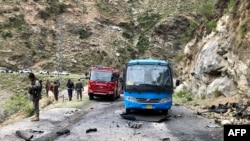
The Taliban has rejected claims of Afghan involvement in recent attacks in Pakistan, calling it “irresponsible and far from the reality.” Pakistan’s military said on May 7 that a suicide bombing which killed five Chinese engineers and a Pakistani driver in March was planned in neighboring Afghanistan and that the bomber was an Afghan citizen. Major General Ahmad Sharif, a spokesman for Pakistan’s army, has said that four men have been arrested. Enayatullah Khawarazmi, a spokesman for the Taliban’s Defense Ministry, said in a statement on May 8 that “blaming Afghanistan for such incidents is a failed attempt to divert attention from the truth of the matter and we strongly reject it."
To read the original story by AP, click here.
Pakistan Says Afghan-Based Extremists Killed 5 Chinese Engineers
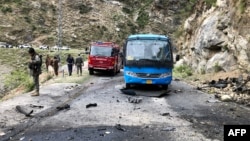
Pakistan’s military has again accused Kabul of providing sanctuary for militants, alleging on May 7 that a March 26 suicide bombing that killed five Chinese engineers and a Pakistani driver was planned in neighboring Afghanistan. Major General Ahmad Sharif, a Pakistani Army spokesman, said the bomber was an Afghan citizen. He said members of Tehrik-e Taliban Pakistan (TTP) -- a radical Islamist group designated as a terrorist organization by Washington -- are based in Afghanistan and have been conducting regular attacks inside Pakistan. Sharif alleged that Pakistan has shared "concrete evidence" with the Taliban government on the issue but that it hasn't been acted upon. To read the original story by RFE/RL’s Radio Mashaal, click here.
- By Ray Furlong
Muddy Floodwaters Surge Through Afghan Villages
Surging brown waters were seen cascading through rural houses and shops in Afghanistan's Ghor Province in the latest flooding to hit the country. Taliban authorities say more than 1,000 families were forced from their homes by heavy rains in recent days. The calamity comes after Afghanistan also suffered heavy flooding that claimed more than 100 lives in March and April.
Locals Protest After Taliban Crackdown Roils Northeast Afghan Province
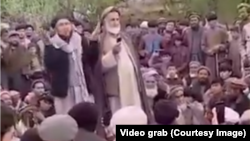
Residents of two remote districts in the northeastern Afghan province of Badakhshan have demanded more accountability and better treatment from the authorities after a Taliban crackdown on protests killed at least two people.
Protests broke on May 3 and 4 in the Darayim and Argo districts when the Taliban attempted to forcefully eradicate the poppy crop. The hard-line Islamist group banned poppy cultivation in April 2022 after returning to power in August 2021.
"People are willing to cooperate in eradicating their opium crops peacefully," Shamsuddin Mubarez, a young activist in Argo, told RFE/RL's Radio Azadi on May 6.
"People responsible for destroying the poppy crops should be locals from Badakhshan," he added while outlining their demands.
A resolution adopted by the residents of Argo also demands that Taliban authorities arrest and punish the perpetrators of the shooting that killed Abdul Basit, 23, a local farmer.
In Darayim, a resident speaking on condition of anonymity said that residents refused to talk to a Taliban delegation made up of provincial officials on May 5.
Nizamuddin, a farmer in Darayim's Qarlaq village, was killed. Three more protesters were injured after the Taliban fighters attempted to quell the protest that erupted after they began destroying the poppy crop on May 3.
"People want the Taliban government to hear our voice," a resident of Darayim told Radio Azadi. "But they acted dictatorially and didn’t listen to us."
Abdul Matin Qane, the spokesman for the Taliban-led Interior Ministry, told the BBC that local demands for prosecuting the Taliban security forces responsible for the killings in Badakhshan were "completely justified."
The Taliban government has appointed its army's chief of staff, Fasihuddin Fitrat, a native of Badakhshan, to head a delegation to negotiate with the protesting farmers in the province.
In a purported audio message on May 6, he urged locals to "urgently" end their protests because their agitation would be seen as a rebellion, which could prompt the Taliban to send security forces to quell any unrest.
At least one person was killed in similar protests in Badakhshan last year.
The Taliban ban has pushed the price of illicit opium in Afghanistan to $1,000. But it has pushed tens of thousands of impoverished farmers to extreme poverty because poppies were the best cash crop in the arid, mountainous country.
The Talibans internationally isolated government has so far failed to attract any significant international aid or investments to help Afghan poppy farmers.
Russia Inches Toward Marriage Of Convenience With Taliban In Terror Fight
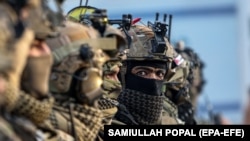
Shortly after the Taliban seized power, Russia addressed the question of whether it was time to review the militant group's status as a terrorist organization.
"It is very important to see what the Taliban's first steps in governing Afghanistan will be like," Kremlin spokesman Dmitry Peskov said on August 30, 2021. "Conclusions can be formed after this."
Two and a half years later -- despite the Taliban's failure to deliver on its promises to form an inclusive government, adhere to basic human rights norms, and prevent Afghan territory from becoming a safe haven for transnational extremist groups -- a mutual enemy appears to be forcing a decision.
Since a deadly terrorist attack claimed by the Islamic State (IS) extremist group near Moscow on March 22, Russia has increasingly talked up its relationship with the Taliban, which is battling the Islamic State-Khorasan (IS-K) offshoot in Afghanistan that is believed to have carried out the attack.
While the Taliban's government is globally unrecognized, Peskov said last month that Moscow has to resolve "pressing issues" that demand increased dialogue with the militant group, whose leaders are "actually the ones in power in Afghanistan."
Considering the importance Russia places on Afghanistan in maintaining regional security in the face of a rising IS-K threat, boosting engagement with the Taliban holds benefits for Moscow, observers say.
Alec Bertina of Militant Wire, a research outlet that tracks militant groups, says that Russia removing the Taliban from its terror blacklist could be the beginning of a "marriage of convenience."
"As much as it's kind of an amusing idea for Russia and the Taliban to get cozy, it's in their security interest to do so right now," Bertina said. "Given the mutual security threat, and that the Taliban can be used basically to take the hits and casualties that come with fighting IS, it's sort of a no-brainer."
When it emerged in Afghanistan a decade ago, IS-K staged attacks in Afghanistan and Pakistan. Its targets included Western forces in Afghanistan as well as the Taliban, which opposed the former Afghan government and vied with IS-K for influence among the dozens of extremist groups active in the country.
Since the Taliban took over, IS-K has maintained pressure on the Taliban, whose rule it rejects, and has worked to "make life as difficult as possible" for its de facto government, said Michael Kugelman, director of the South Asia Institute at the Wilson Center in Washington.
Its attacks against the Taliban, religious minorities, and foreign targets in Afghanistan were designed to "undermine the Taliban's legitimacy in order to convince the Afghan people that the Taliban is unable to provide peace and security in the country," Kugelman told RFE/RL's Radio Azadi.
IS-K has also openly challenged its rival in a sophisticated propaganda campaign, mocking the Taliban government's desire to be recognized by the international community and accusing it of adhering to an "ignorant" brand of Islam.
The group has also increasingly expanded its reach further abroad, including with deadly attacks in Iran, Russia, and Central Asia, a major recruiting ground for IS-K fighters.
"Its main bases are still in Afghanistan, most of its attacks are in Afghanistan, but this is a regional affiliate of Islamic State that has increasingly global goals," Kugelman said of IS-K.
As evidenced by the recent attack on a concert venue that killed more than 140 people and injured hundreds more -- the deadliest terrorist attack on Russian soil in two decades -- Moscow has reason to treat the IS-K with urgency and to forge greater cooperation with one of the group's main adversaries.
"Russian outreach and concessions to the Taliban are likely meant, at least in part, to signal Moscow's confidence in the Taliban's ability to degrade the IS-K threat," Kugelman told RFE/RL in written comments.
The Taliban was designated as a terrorist organization by Russia in 2003, two years after it was pushed from power by U.S.-led forces.
After returning to power, the Taliban initially dismissed the IS-K threat and has insisted that the group is not active on Afghan soil, even as it consistently developed its capabilities to confront the group and destroyed IS-K cells.
Most recently, in April, the Taliban reportedly ordered the creation of a special military unit to fight the IS-K.
But "whatever the Taliban has done against IS-K, it hasn't stopped IS-K from being able to conduct external operations in other countries," Bertina said, noting that it has proved incapable of preventing IS-K's recruitment efforts.
That, Bertina said, has led Russia and other countries to discuss "whether it may be of interest to help [the Taliban] out a little bit in their fight."
Moscow's de-listing of the Taliban from its terror blacklist, Bertina said, could pave the way for Russia to potentially "start giving the Taliban resources to better fight IS-K."
Bertina says he envisions a situation in which the Taliban would bear the brunt of the fighting on the ground in Afghanistan, with Russia providing intelligence. Russia would be unlikely to "be too vocal" about direct raids on IS-K in Afghanistan, "considering the uncomfortable history Russia has regarding counterterrorism operations when it comes to countries like Afghanistan."
Kugelman also sees value in Russia cooperating with the Taliban on the counterterrorism front, citing the Taliban's "willingness and capacity to carry out scorched-earth ground campaigns against IS-K."
Russia, while bogged down in its war against Ukraine, could potentially offer the Taliban "arms, money, and even training and advising to help the Taliban do more damage against the IS-K," Kugelman said.
- By AP
Afghanistan's Only Female Diplomat Resigns In India After Gold-Smuggling Allegations
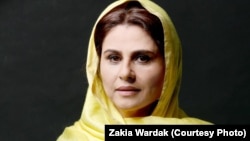
An Afghan diplomat in India, who was appointed before the Taliban seized power in 2021 and said she was the only woman in the country's diplomatic service, has resigned after being detained for allegedly smuggling gold. Zakia Wardak, the Afghan consul-general in Mumbai, announced her resignation on May 4 after Indian media reported she was briefly detained at the airport on allegations of smuggling 25 bricks of gold from Dubai. Reports said she wasn't arrested because of diplomatic immunity. Wardak said that "I am deeply sorry that as the only woman present in Afghanistan's diplomatic apparatus, instead of receiving constructive support to maintain this position, I faced waves of organized attacks aimed at destroying me."
The Azadi Briefing: Deadly Floods Wreak Havoc Across Afghanistan
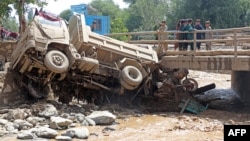
Welcome to The Azadi Briefing, an RFE/RL newsletter that unpacks the key issues in Afghanistan. To subscribe, click here.
I'm Abubakar Siddique, senior correspondent at RFE/RL's Radio Azadi. Here's what I've been tracking and what I'm keeping an eye on in the days ahead.
The Key Issue
Flash floods caused by spring downpours have wreaked havoc in most provinces in Afghanistan.
The Taliban said at least 103 people were killed and over 60 injured in floods and heavy rains between March 21 and April 29.
The downpours have also damaged thousands of houses, while over 100,000 acres of farmland have been destroyed.
“Snow and hail have ruined my apricot, apple, and cherry trees,” Sayed Gul Badshah, a farmer in the central province of Maidan Wardak, told RFE/RL’s Radio Azadi.
Saed Akbar, a farmer in eastern Nangarhar Province, said heavy rain and hail have "utterly wrecked" his wheat and vegetable crops.
In the northern Faryab Province, farmer Abdul Qureshi said floods "washed away" scores of houses in the district of Pashtun Kot.
After a prolonged dry spell in autumn and winter, Afghanistan and its neighbors have been witnessing unusually heavy rains and snowfall in the spring.
Why It's Important: Afghanistan is one of the most vulnerable countries to climate change.
Experts say climate change has worsened the frequency and severity of extreme weather events -- from droughts and heat waves to floods and storms – around the world.
Afghanistan’s ability to adapt and difficulties in attracting international aid under the unrecognized Taliban government are seen as major obstacles to dealing with the situation.
Extreme weather conditions have exacerbated the humanitarian crisis in Afghanistan, the world’s largest.
What's Next: There are signs that the international community is responding to the crisis by empowering local Afghan communities to combat climate change.
But it is unclear if the initiatives will help mitigate against large-scale natural disasters caused in part by climate change.
Deadly floods and extreme drought in recent years have uprooted millions of Afghans, some of whom have been forced to flee abroad.
What To Keep An Eye On
Reporters Without Borders (RSF) has expressed alarm about the situation of scores of exiled Afghan journalists who are staying in neighboring Pakistan.
Celia Mercier, head of RSF's South Asia desk, on April 30 urged the Pakistani authorities and international community to help protect Afghan journalists who fled their homeland for fear of retribution by the Taliban.
Mercier told Radio Azadi that Afghan journalists living in Pakistan “should be able to utilize their journalistic skills” or be allowed to move to a third country willing to host them.
Most of the nearly 200 journalists fled after the Taliban’s return to power in 2021 and are now waiting to be relocated to Western countries.
RSF said that the journalists lack access to education, health care, and employment.
Mohammad Idris Sadat, one of the stranded journalists, said many are suffering from "mental health problems because they face uncertainty" as their immigration cases are taking too long.
Why It's Important: After returning to power, the Taliban has attempted to erase the once vibrant Afghan media landscape.
Fear of reprisals by the group has forced hundreds of reporters and media workers to flee the country. Those remaining have faced beatings, arrests, and harassment.
Hundreds of print and electronic media outlets have been either shut down by the Taliban or closed due to a lack of funding.
That's all from me for now.
I'm off next week. The next Azadi Briefing will appear on May 17.
Don't forget to send me any questions, comments, or tips that you have. You can always reach us at azadi.english@rferl.org
Until next time,
Abubakar Siddique
If you enjoyed this briefing and don't want to miss the next edition, subscribe here. It will be sent to your inbox every Friday.
- By RFE/RL
Eastern Europe, Central Asia See 'Spectacular' Rise In Media Censorship, RSF Says
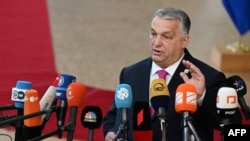
Suppression of press freedom rose over the past year in Eastern Europe and Central Asia, where governments with increasingly authoritarian tendencies have followed Russia's example of stifling and punishing free speech, media watchdog Reporters Without Borders (RSF) said.
Press Freedom Day
To mark World Press Freedom Day on May 3, RFE/RL has prepared the following stories about the plight of media in our broadcast area:
Highlighting the situation in in its annual media world ranking, published on May 3, RSF noted the worsening media situation in Belarus, where strongman Alyaksandr Lukashenka's regime persecutes reporters under the excuse of fighting “extremism”; Georgia, where the government has been pushing "foreign agent" legislation modeled on a Russian law, despite massive public protests; and in Kyrgyzstan.
"Media censorship has intensified in a spectacular mimicry of Russian repressive methods," RSF said.
Belarus dropped 10 positions to 167th in the world, while Georgia, at 103th, fell a whopping 26 places.
RSF said Russia, which ranked 162nd out of 180 countries, has continued its campaign against independent journalism, using the “foreign agent” or “undesirable” legislation to arbitrarily imprison remaining journalists as more than 1,500 have left the country since the start of the war. RFE/RL journalist Alsu Kurmasheva and Evan Gershkovich of The Wall Street Journal are currently imprisoned in Russia.
Azerbaijan fell 13 places to 164th mainly due to the authorities' crackdown on the media before its presidential election, RSF said.
The report pointed to the deteriorating situation in Serbia -- down seven positions to 98th place -- as an example of the Kremlin's long reach.
Press outlets affiliated with the pro-Russian government of Serbia relayed Moscow's propaganda, while anti-war Russian journalists who found refuge in Serbia after Moscow's invasion of Ukraine are being threatened with expulsion.
RSF notes as a positive development the 18-place jump made by Ukraine due to what it says are improvements in the security and political indicators. Political interference in Ukraine has fallen, with the country being currently ranked 61st, the report said.
In Eastern Europe, the report notes a "dangerous trend" by some governments to stifle independent journalism, which RSF calls "Orbanization," after Hungarian Prime Minister Viktor Orban. Orban, in power since 2010, has been accused of muzzling the free press. Hungary is currently in 67th place.
In Slovakia, ranked 29th, the situation is also deteriorating under Russia-friendly Prime Minister Robert Fico, RSF says.
In Central Asia, Turkmenistan, where independent reporting is completely banned, is listed 175th, while Kyrgyzstan is listed 120th.
Afghanistan, where the persecution of journalists has been "incessant" since the return of the Taliban to power in 2021, three journalists were killed and at least 25 were detained over the past year. Afghanistan dropped 26 places to 178th out of a total of 180 countries in the index.
This Is What It's Like To Be A Journalist Under Taliban Rule

Afghan journalists are forbidden from broadcasting or publishing stories that are critical of the Taliban.
World Press Freedom Day 2024
To mark World Press Freedom Day on May 3, RFE/RL has prepared the following stories about the plight of media in our broadcast area:
Reporters who cross that red line have been arrested and jailed, beaten in custody, or threatened and harassed.
But journalists don't just face restrictions on which issues they can cover. They are also severely limited in how they report stories and who they can interview.
Women and girls are banned from appearing on TV or radio programs. Male reporters, meanwhile, are barred from interviewing women and vice versa.
This is what it is like to be a journalist in Afghanistan nearly three years after the Taliban seized power. The militants have transformed the once-vibrant media landscape in the war-torn country, where censorship is now rife and dissent has been largely stamped out.
"It is impossible to be a journalist under the Taliban," a female reporter based in central Afghanistan told RFE/RL's Radio Azadi.
The reporter, like others interviewed for this story, spoke on condition of anonymity for fear of retribution.
'Red Lines'
After regaining power in 2021, the Taliban initially promised to allow a free press. But its hard-line government soon waged a violent crackdown on independent media.
Scores of reporters and media workers have been imprisoned or physically attacked. The Taliban has shut down dozens of media outlets. Hundreds of journalists have fled the country out of fear.
Only a few independent media outlets still operate under the Taliban. But their journalists face severe restrictions and often resort to self-censorship.
Covering issues like "insecurity, human rights, and corruption" are off-limits, said a Kabul-based editor who works for a major broadcaster.
Taliban officials often instruct journalists to "report only on issues" that put them in a more positive light, the editor said.
The Taliban has also told broadcasters not to interview ordinary Afghans on the streets in a bid to prevent criticism of the group.
"We are also not allowed now to invite Afghans living abroad to participate in programs," the editor said. "It is forbidden to include the views of the Taliban's opponents."
A reporter based in northern Afghanistan says he tried to investigate reports of alleged sexual abuse in Taliban-run madrasahs, or Islamic seminaries, and the Taliban’s decision to award lucrative mining contracts to state-run companies. But he dropped the stories for fear of reprisals.
"Such issues are completely off-limits," he told Radio Azadi.
'I Can't Go Out'
The Taliban’s restrictions on the media have disproportionately affected women.
The militants have imposed severe restrictions on women's appearances, freedom of movement, and right to education and work.
"I can't go out now and report," said the female reporter based in central Afghanistan, adding that she is barred from interviewing men and cannot travel far from home without a male chaperone.
Another female reporter from central Afghanistan says she was called in for questioning after reporting on a protest by women against the Taliban's repressive policies.
"I was asked why I report on such issues," she told Radio Azadi. "They asked me, 'Are you against the government?'"
She says the officials threatened her and said she would face "serious consequences" if she reported on any unsanctioned rallies again.
In broadcast media, there are even more restrictions.
Female TV presenters have been forced to wear a black robe and head scarf with only their eyes visible.
TV and radio stations have been banned from broadcasting female voices and accepting call-ins from women.
Growing Censorship
The Taliban's crackdown on journalists appears to be intensifying.
In recent months, the militant group has imposed new restrictions on female journalists' appearances, banned some women from accessing radio and TV programs, and prohibited the filming or photographing of Taliban officials.
On April 22, three radio journalists were detained in the southeastern province of Khost after they allegedly aired music and received calls from female listeners during broadcasts. They were all released on April 28.
The Taliban suspended the operations of two private TV stations based in Kabul on April 17 for violating "national and Islamic values."
The Taliban has issued "11 rules for journalists" that prohibit the publication or broadcasting of reports that are "contrary to Islam," and which discourage the reporting of news that has not been confirmed by Taliban officials.
The Taliban's message in clear, said a print journalist based in Kabul: Do not publish or broadcast "anything critical of the government."
The Kabul-based editor says the Taliban's ongoing persecution and harassment of journalists are forcing more journalists to abandon their professions or flee their homeland.
"Everyone I know just wants to escape abroad," they said.
7 Killed In Attack On Afghan Mosque
Seven people were killed in an attack on a Shi'ite mosque in Afghanistan's Herat Province late on April 29. Media reported that the attack took place at the Imam Zaman mosque in the Guzereh district of Herat. Among the dead are the imam of the mosque, a child, and five adult worshipers, reports said. No further details were immediately available. To read the original story by RFE/RL's Radio Azadi, click here.
RFE/RL has been declared an "undesirable organization" by the Russian government.
If you are in Russia or the Russia-controlled parts of Ukraine and hold a Russian passport or are a stateless person residing permanently in Russia or the Russia-controlled parts of Ukraine, please note that you could face fines or imprisonment for sharing, liking, commenting on, or saving our content, or for contacting us.
To find out more, click here.
Editor's Picks
Afghanistan/Pakistan Trending
What's Behind The Deadly Surge Of Violence In Pakistan's Balochistan?
2Russia Inches Toward Marriage Of Convenience With Taliban In Terror Fight
3At Least 4 Killed In Attack On Foreign Tourists In Afghanistan
4'One-Party Rule': Taliban Wages Crackdown On Political Parties
5This Is What It's Like To Be A Journalist Under Taliban Rule
6Taliban's Drug Ban, Heavy-Handed Tactics Fuel Deadly Protests In Northern Afghanistan
7'There's Nothing Left': Victims Of Devastating Afghan Floods Struggling For Survival
8Afghanistan's Only Female Diplomat Resigns In India After Gold-Smuggling Allegations
97 Killed In Attack On Afghan Mosque
10Locals Protest After Taliban Crackdown Roils Northeast Afghan Province
Subscribe




